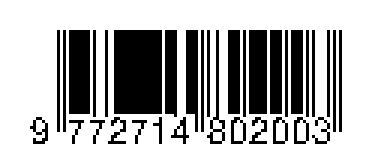PENGOLAHAN LIMBAH CAIR RUMAH MAKAN DENGAN SISTEM KOMBINASI PRESIPITASI-AEROBIC BIOFILTER
DOI:
https://doi.org/10.34151/technoscientia.v11i1.114Keywords:
precipitation-aerobic biofilter, restaurant waste, saponificationAbstract
Restaurant business lately is rapidly developing in big cities along with the many requests by people who want food service with fast, practical and food variation. One of problem that arises due to increased restaurant / restaurant activities is the contamination of water sources.
Waste water containing organic can decompose or be degraded by microorganisms so if the waste water thrown into a body of water it will increase the population of microorganisms, and that will increase the BOD level, then the soap will cause an increase in the pH of the water. According to Government Regulation No. 82 of 2001 concerning Water Management and Water Pollution Control, there are domestic waste water is required to be processed first before being discharged into public channels and meeting quality standards according to the Decree of the Minister of Environment Number: Kep-51/MENLH/10/1995 while for activities in the DIY area the quality standard refers to Yogyakarta Special Province Regional Regulation Number 10 Year 2017.From the results of the research conducted, the optimum conditions for the Saponification process in addition of 17 ml / 1000 ml NaOH waste obtained fat/oil content of 8.7 mg / L and pH 11.35 with the jar test results to determine the volumetric coagulant dose (Aluminum sulfate 5 %) is 15 ml / 300 ml of waste and results of Turbidity 8.2 NTU, Color 189 PtCo and pH 7.5, for the optimum time of the aerobic biofilter process for 8 hours with the results of BOD analysis 24.12 mg/L, COD 42, 34 mg / L and Fat / oil 4.2 mg/L it has fulfilled the quality standard according to Decree of the Minister of Environment No. Kep-51 / MENLH / 10/1995.
References
Ketaren, S., 2005, Teknologi Minyak dan Lemak Pangan, UI, Jakarta.
Mardianto, W., Apriani, I., Hayati, R., Pengolahan Limbah Cair Rumah Makan Menggunakan Sistem Kombinasi ABR dan Wetland dengan Sistem Kontinyu, https://media.neliti .com/media/publications/191245-ID-pengolahan-limbah-cair-rumah-makan -mengg.pdf, diakses tanggal: 01 Juli 2018.
Metcalf, Eddy, 1993, Wastewater Engineering: Treatment and Reuse. Fourth Edition, International Edition, McGraw-Hill.
Prawira, 2010, Reaksi Saponifikasi Pada Proses Pembuatan Sabun, Penebar Swadaya, Jakarta.
Said, N. I., 2001, Pengolahan Air Limbah Rumah Sakit dengan Proses Biologis Biakan Melekat Menggunakan Media Plastik Sarang Tawon. Jurnal Teknologi Lingkungan, Vol. 2, No.3, Hal.: 223-240.
Tchobanoglous, G., Burton, F. L., Stensel, H. D., 2003, Wastewater Engineering Treatment Disposal Reuse, Fourth Edition, McGraw-Hill Education.
Zahra, L. Z., Purwanti, I. F., 2015, Pengolahan Limbah Rumah Makan dengan Proses Biofilter Aerobik, Jurnal Teknik ITS, Vol. 4, No. 1., Hal.: 35-39.







